The Elements of Art Eight tools, infinite expression
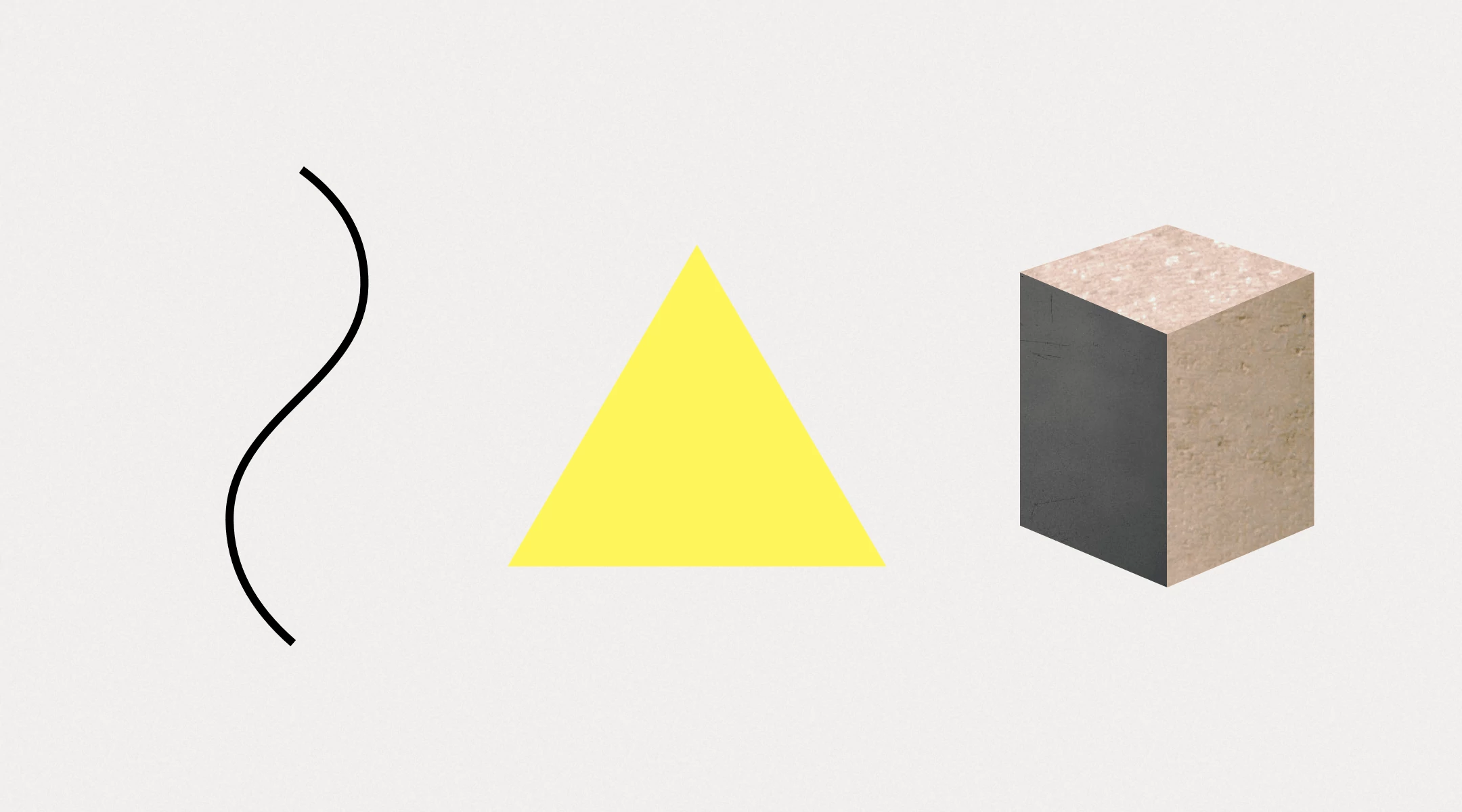
All artwork speaks the same language through a vocabulary of eight terms expressed in infinite ways. We all understand the vocabulary of art subconsciously, but recognizing how it’s applied enriches our experience of art and allows for nuanced discussion of artworks and appreciation of the artist's passion and skill. The vocabulary of art is made up of the Formal Elements of Design: line, shape, form, space, color, texture, motion, and time.

The most basic element of design is the line: a mark with greater length than width, the path traced by a moving point. In mathematics, a line has no width, but in art, lines can be thin, thick, rough or smooth. Lines can convey tremendous emotion, from aggressive zig-zags or tranquil waves to nauseating spirals. Artists can convey confidence in bold lines, or precision with straight lines.

A shape is formed when lines enclose a space. The edges of the shape are its contour, which can be geometric or organic, open or closed. Like lines, shapes can be expressive, sharp or soft, architecturally rigid or flowing. Simple shapes form a common vocabulary that stretches back millenia, often associated with specific attributes. Roman Architects believed the circle to be divinely perfect, and used it when designing their temples. Triangles were imagined to point to the heavens.

Form is the real or perceived dimensionality of a shape, expressing length, width, and depth. Spheres, cubes, pyramids are three-dimensional forms, and some of the fundamental building blocks for expression in art. Form can also describe the structure of a work of art. The composition of a painting or the chapters of a book. Form can be used to talk about the arrangement of formal elements that present the whole.

Space is the area between and around objects. In art and design, the space is as important as the forms it surrounds. Space can be two or three dimensional, and is often referred to as negative space. Space holds the objects it contains, providing context. Space is as emotive as lines and shapes, and can create feelings of isolation, claustrofobia, or wide open possibility.

Color is possibly the most complex tool at the artist's disposal. Color is scientifically defined as the light that reflects off illuminated objects, whose pigmentation absorbs some wavelengths, and the wavelengths that remain enter the eye. The colors we see are part of the visible spectrum: red, orange, yellow, green, blue, and indigo, but these colors combine into millions of perceivable colors. To talk about the variations of colors, we use the terms hue, value, and intensity. Hue defines the range the color sits within, like a greenish yellow or a yellowy green. Value is the relative lightness or darkness of the color, and intensity is the relative brightness or dullness of the color.
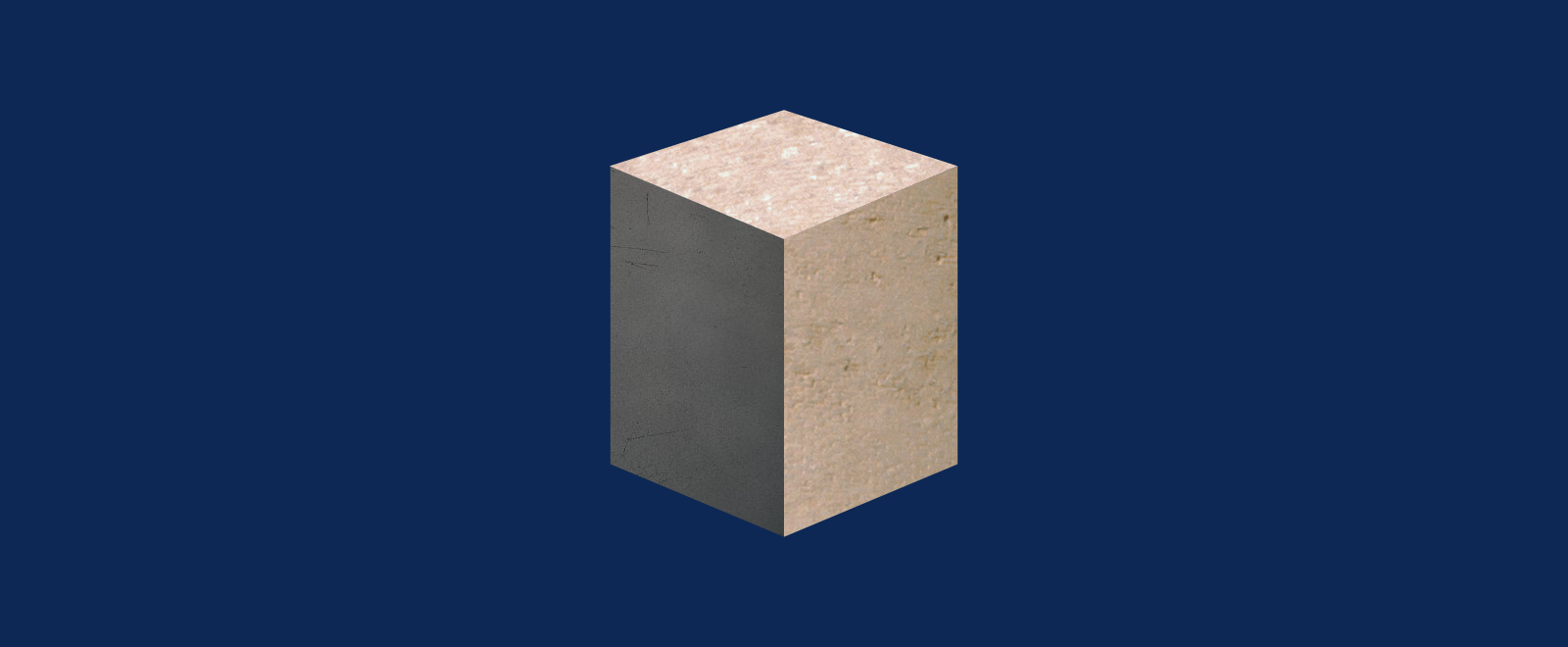
Texture comes from the latin word texo , meaning 'to weave' and refers to the qualities of a material surface. Texture may be seen and felt in dimensional objects, such as canvas or a marble sculpture, and two-dimensional objects can create the illusion of texture, like a photograph of a rough wooden surface. Texture can be evocative. Smooth objects can feel refined, and rough surfaces may create a gritty, aggressive appearance.

Motion is the movement or change of an object over time. In art motion can be applied to sculpture, called kinetic sculpture , and is a natural element of video and performance art.

The effect of time on artwork is an oft overlooked element of design. All objects change over time, though in different ways. A stone artifact from 30,000 BCE may be nearly unchanged from the time of its creation, but paintings fade. Time is also part of how we consume art. A book may take weeks to read, and that time creates a different context for the experience than an article read in minutes. Video uses time the same way a painter uses negative space, employing pacing, momentum, and balance over the length of the film.
Reed Enger, "The Elements of Art, Eight tools, infinite expression," in Obelisk Art History , Published June 24, 2017; last modified November 08, 2022, http://www.arthistoryproject.com/essays/the-elements-of-art/.


Art History Methodologies
Eight ways to understand art
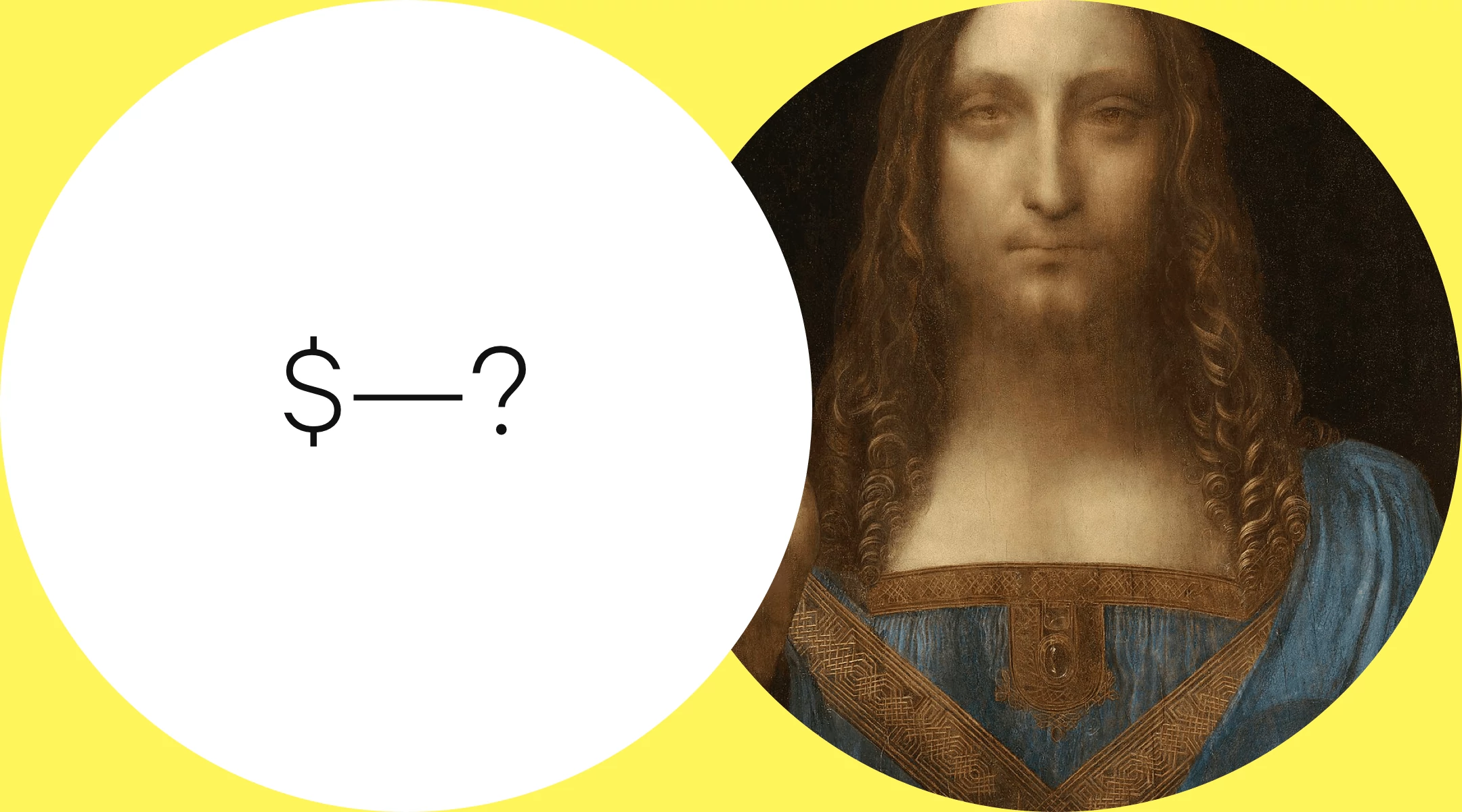
The Value of Art
Why should we care about art?
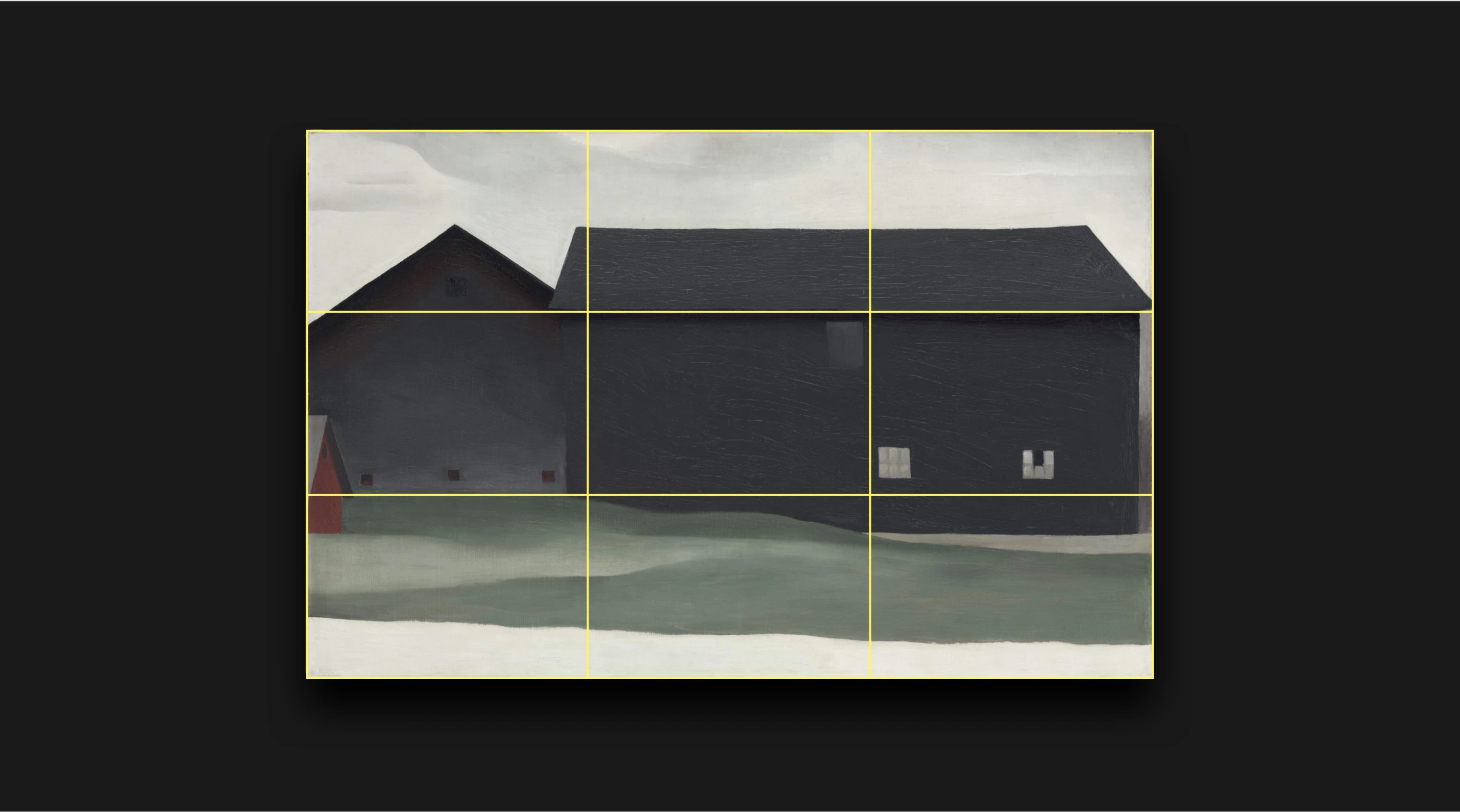
Basic Composition Techniques
A few easy tips
By continuing to browse Obelisk you agree to our Cookie Policy

The 7 Elements of Art

Introduction
Every time you create an artwork there are 7 elements, or components, that your artworks consists of. More often than not we just take these elements for granted, or don't even give them a second thought.
They are however critical to the success of your artwork. By keeping them in mind as plan and create your artwork, you will end up with a much better artwork.
One that will be easier to look at as the person's eye will flow through your artwork more fluently. You will have control over how their eye moves through your painting - you will be able to lead them through the painting.
This is just one of the benefits of knowing the 7 elements of art. Let's dive right in by looking at what these 7 elements are:
What are the 7 Elements of Art?
The seven elements of art are line, shape, form, space, value, color and texture. These elements are the essential components, or building blocks, of any artwork. Any good artwork should consist of these 7 ingredients.
Element 1 - Line
Line is the most basic element of art. Without line the other elements couldn’t exist so let's start here and then we will gradually go more advanced.
A line can be thought of as a moving dot. If the dots overlap, it’s a solid line, if they don’t it’s a dotted line. A line has a beginning and an end and by its existence, creates an edge.
If a line joins up it forms an outline (also called a contour). An outline creates a shape.
Lines can be:
Long or short
Thick or thin A thick line gives emphasis and advances while a thin line recedes.

Straight Straight lines on the other hand are more mechanistic and dynamic and rarely found in nature.

Curved Curved lines change direction gently with no sharp angles and suggest comfort and ease to the viewer. Curved lines most often relate to the natural world.

Zigzag Zigzag lines alter direction fast and create feelings of unrest, turmoil and movement.

Diagonal Diagonal lines, give movement and dynamism to a composition.

Horizontal Horizontal lines create the feeling of stability and calm.

Vertical Vertical lines give the impression of height and strength and often have a spiritual connotation.

Imaginary Lines can be imaginary or implied; for example line of sight can be a very strong albeit invisible line along which the viewer’s eye travels. Also a pointing finger can send the viewers eye on a journey through the painting.

Three Dimensional Lines alone can also be used to create a three dimensional effect, (depth, in a 2-dimensional artwork. Hatching lines (straight or curved) are used to turn shape into form using value as seen the works of the masters like Rembrandt.
In summary lines can:
- Describe 2-dimensional shapes and 3-dimensional forms
- Create feelings of movement and emotion
- Create value and thereby show the direction of light
- Change 2-dimensional shapes into 3-dimensional forms with value
- Depict texture
Element 2 - Shape
When a line meets up to enclose a space, a shape is formed.
Shapes can be:
Geometric or organic.

Shapes are 2-dimensional, i.e. they have height and width but no depth e.g. a square. The best way to remember the shape element is to think of an outline.

Positive or Negative Shapes
The object you draw on your page is a shape enclosed in a frame. This frame may be a box you drew to designate the edges of your drawing area or the edge of the page if you didn’t draw a box. The object you draw is the positive shape. The rest of the space in your box (or if you didn’t draw a box then the rest of the page) is called negative shape.
Element 3 - Form

Form is the next step up from shape as we now add depth to it to create a three dimensional form.
A square (shape) vs a cube, a triangle vs a cone etc. etc. Form encloses volume i.e. height, width as well as depth.
In drawing and painting form can only be implied because they are 2-dimesional (flat) media. Artists must use tricks to fool the viewer’s eye so as to create the illusion of the third dimension i.e. depth. This is known as Trompe l’oeil and is achieved using tools like value (shading), colour and contour lines.
Here you can see how shading has been used to create the illusion of 3-dimensional objects on a flat wall:

Like shapes, forms can be geometric or organic.
Organic forms are common in nature while geometric forms are more characteristic of architecture and man-made items. Nature however also uses geometric forms on occasion. Examples are crystals and honeycombs.
Element 4 - Space
Space is what lies between, around or within an object.
To show space in a 2-dimensional medium the artist must use techniques to create the illusion of space between items that are in reality on a flat surface.
How do artists create this feeling of space between objects?

Overlapping
When an object is drawn or painted on top of another object the viewer’s eye interprets this as one object being in front of another implying there must be a space between them.

Objects higher up in the picture plane will seem to the viewer’s eye to be further away than objects placed low down in the picture frame.
Smaller objects look as if they are further away than larger objects. Notice how much smaller the house is in relation to the flowers.

The further away an object, the less detail is visible to the viewer. By purposely reducing the amount of detail in an object it will appear further away than an object with greater detail.

Colour and Value
Objects in the distance usually appear cooler (bluer) and lighter in colour. Close up objects appear warmer and darker in value.
Perspective
Can be used to create the feeling of depth on a 2-dimensional surface. The most commonly used perspective types are linear and 2-point perspective.
Negative Space
Space can be either positive or negative in the same way as shapes can.
Negative space is all around the object, which is the (positive space) subject of the painting.
Negative space is very important and an artist must plan the negative space as carefully as the main subject.
Is there enough negative space to give the subject room to “breathe” or does it appear boxed in?
Negative space can be cut to a minimum or eliminated entirely for a very close up and intimate focus on the subject.
It can be greater on one side than the other, or greater at the top or bottom.
All choices which will affect how the viewer sees the overall composition.
Element 5 - Value

Value is how light or dark something is.
There is a scale of light and dark from pure white through to pitch black. The value of a colour depends on how light or dark it is compared to the value scale.
Getting the values right is more important than getting the colours right in painting. Value is what makes it possible to show 3-dimensional forms in a 2-dimensional surface.
By increasing differences in value, contrast is increased as well. A highlight will look brighter when surrounded by a dark value. Decreasing contrast will make objects visually recede into the picture plane and draw less attention.
The focal point of a painting is where you want to add the most contrast as this high contrast automatically draws the viewer’s eye.

If a painting is done on the lower (darker) edge of the value scale it is called a “low key” painting. Low key paintings give rise to a heavy, mysterious, dramatic, sometimes brooding feeling in the viewer.

By contrast “high key” paintings take their range of values from the upper end of the value scale and create emotions of lightness, quickness, spirituality etc.
Most paintings however use the full range of values from light to dark.
Value is what artists use to portray light and form. The further from the light the darker the value.

How value changes determines the form of an object.
If there’s a gradual transition in value it conveys to the viewer that the surface is gently rounded. This is called a soft edge.
If however there is a rapid transition between values it means there is an edge. This is called a hard edge.
Value is also used to create shadows which show light direction and anchor the object, preventing it from appearing as though it is floating.
Element 6 - Colour

Colour is created when light is reflected into the viewer’s eye.
In art, colours are arranged on a colour wheel. The colour wheel was developed by Isaac Newton who took the colour spectrum and bent it into a circle.
The colour wheel shows primary colours, (colours that can’t be mixed), secondary colours (made by mixing two primaries) and tertiary colours (made by mixing a primary and secondary colour).
Colour theory helps the artist to mix desired colours from primary colours. It’s only a theory and can’t be proven but it is nevertheless useful to the artist. Colour theory is based on the colour wheel, colour value and on which colours work well together - also called colour schemes.
There are various colour schemes which define the primaries. The most common is the Red, Yellow, Blue model. Another popular scheme uses Cyan, Magenta and Yellow as the primaries. There are several other and each works well in different situations.
Colour is described by its hue – red, green etc. (Hue the name we give a colour.)
A colour has intensity called chroma, also known as saturation, brightness or purity. The more pure the colour is (less of other colours mixed in), the more intense or saturated it is. In painting only small amounts of saturated colours are usually used as accents. Too much saturated colour can give a garish result. The chroma of a colour is not the same as its value.
Colours also have value. Value is how light or dark the colour is, as discussed in Element 5 above. Each colour falls on the value scale from light to dark. Yellow would be near the top (light end) of the scale while purple would be found near the bottom end. To change the value of a colour you follow the Colour Mixing Rules .

Art supply stores sell interactive colour wheels which are essential to the artist working with colour. I recommend this Color Wheel .
Element 7 - Texture

Actual texture is the way an object feels to the touch.
Drawing or painting texture on a 2–dimensional, flat surface is a challenge for artists. The artist must instead convey the illusion of the actual texture to the viewer on the flat surface.
How this is done is by the careful use of value and specific marks / brush strokes which then mimic the actual texture.
Every textured surface reflects light in a very particular way. Think of the difference in texture between a chrome ball and a concrete ball. The artist, through careful observation and the use of light and dark values, recreates this actual texture visually on the picture plane.
You can follow our tutorial in Drawing Weathered Textures to get a feel for how this is done.

It is possible to create actual 3D texture on a flat surface by the addition of texturing compounds which create a raised surface. Impasto paste is one way or you could even add sand etc. to the paint. Even thick paint will leave the texture of the brush marks for the viewer to see.
You can follow our tutorial on Texture Painting Techniques to see how you can add texture to your canvas.

It is also possible to create patterns by the repetition of shapes that creates 2D texture. This is often used in Op Art. (Optical Art).
I think you will agree that you have been using many of the seven elements throughout your artworks without even realising it.
Now that you are however aware of these elements, you can look out for them as well as look out for ways to incorporate more of them into your artworks.
This will add extra depth, dimension, texture and interest to your artworks, taking them to a whole new level.

About Nolan Clark
Read more about Nolan Clark
Follow Us on :
Copyright © · Paint Basket TV · All Rights Reserved
As an Amazon Associate, I earn from qualifying purchases.
Pin It on Pinterest

Elements of Art – An Analysis of the Seven Art Elements
Did you know that when you look at a work of art, you are really looking at several art elements composing it? Like an orchestra, each instrument has a part to play, culminating in a beautiful visual symphony. In this article, we will unpack the building blocks of art that will help you recognize how art elements are used to establish a sense of completeness and how one can distinguish between the art elements and principles of art. Read on to learn more about these fundamental elements!
Table of Contents
- 1.1 What About the Principles of Art?
- 2.1.1 Color Science and the Color Wheel
- 2.1.2 Temperature in Color
- 2.1.3 Color Intensity and Saturation
- 2.2 Value
- 2.3 Texture
- 3.1 What Are the Elements of Art?
- 3.2 How Many Art Elements Are There?
- 3.3 Why Are the Elements of Art Important?
The Fundamentals: What Are the Elements of Art?
In simple terms, the elements of art are understood as the parts that make up a single work of art. These are often described as methods or components in the visual arts . There are typically seven primary elements of art namely; color, value, line, shape, form, texture, and space. We will discuss each of these in more detail below.
Artists can apply the seven elements of art in numerous different ways to create artworks that are visually appealing and expressive.
Art elements can apply to almost all types of artworks, including paintings, drawings, designs, or any other form of visual composition. So, why is it so important? It is important to understand the elements of art if you are an art student, or even if you are an art enthusiast because they act as guidelines or tools to not only compose an artwork but to analyze it. Furthermore, in planning how to incorporate such elements in your artwork, you can be sure to guide the viewer’s eye to your intended subject. Once the art elements are understood, the possibilities are seemingly endless as to how they can be applied. Here is the overview:
| | The main aspects of color include the color wheel, different color schemes, primary, secondary, and tertiary colors, hues, tones, tints, shades, saturation, color intensity, value, color temperature, complementary colors, and analogous colors. |
| This refers to the light and dark aspects of color and is understood by differences in low-key, high-key, and middle-key variations. | |
| The main types of lines include horizontal, vertical, diagonal, short, long, curved, and zig-zag lines, which can be applied to form the fundamental structure of an artwork. Lines can also help create different effects and convey movement, rhythm, and emphasis. | |
| Shape ranges from square, circular, triangular, or rectangular and can be two-dimensional, geometric, or organic. | |
| Form is described by any three-dimensional structure that contains a width, height, and depth, and ranges from cubic, spherical, pyramidal, or conical to geometric or organic. | |
| This refers to the “surface quality” of artworks, which can be real or implied. | |
| Space refers to the three-dimensionality or depth created in a composition. It is comprised of positive and negative space, which can be utilized to create different effects. |
Have you ever looked at a painting without knowing what the elements of art are? Did it just look like a picture to you? Without the knowledge of these tools, we are not able to go deeper into the underlying structure of visual composition. In other words, art elements provide the framework for understanding an artwork.
It is almost like learning a language, such that each element of art plays a role in forming a visual “sentence”.
As such, some art sources describe the elements of art as a form of “visual literacy” that all those who wish to engage with it in a meaningful way, should strive to learn. So, the next time you visit an art gallery , you can be sure to better appreciate the work of art, whether it be a complex sculpture or minimalist painting.
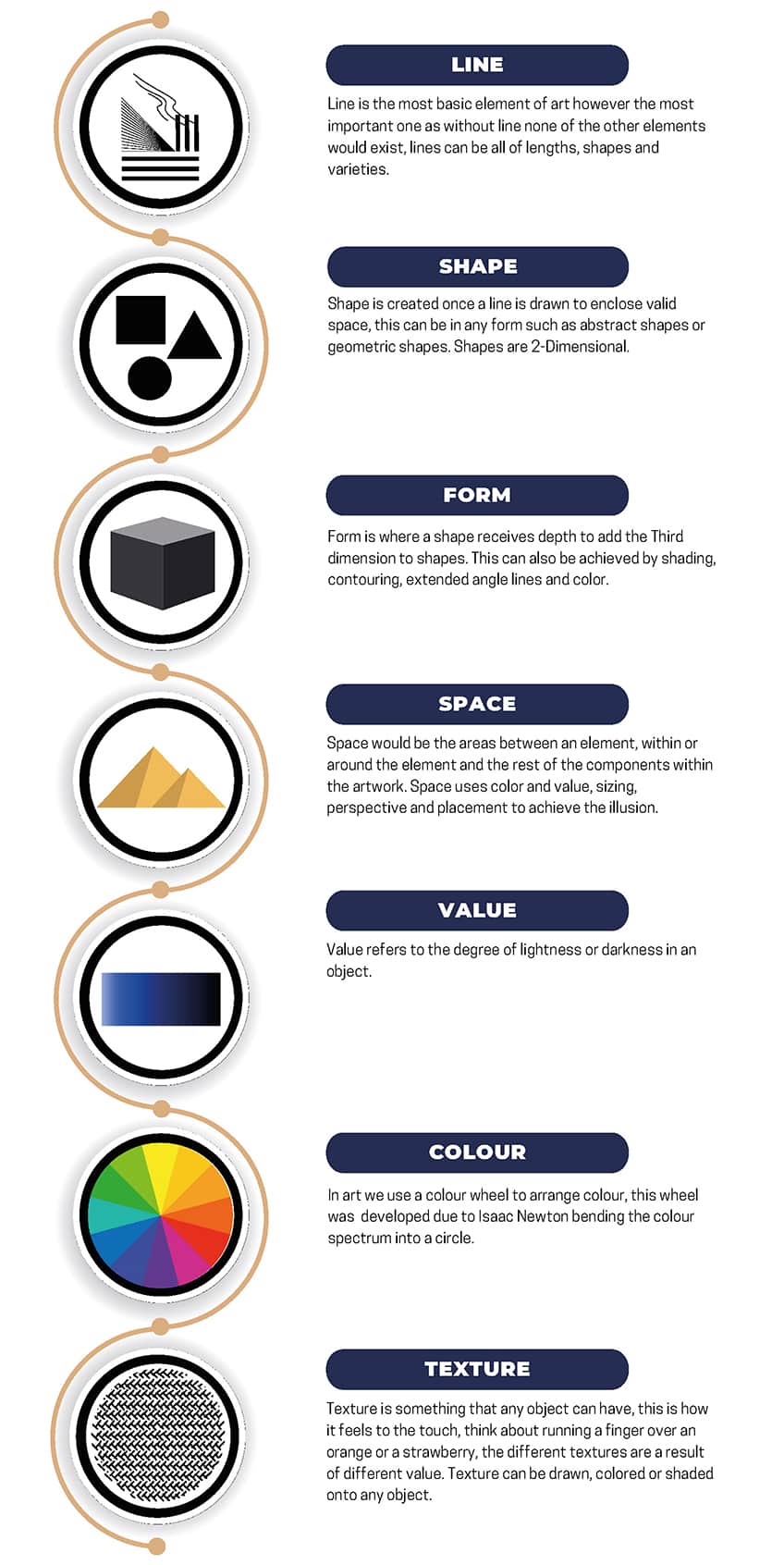
What About the Principles of Art?
Before we discuss the seven elements of art in more detail, we need to provide a brief overview of the principles of art. The principles of art are also referred to as the principles of design or the principles of organization. These principles provide structure to how the art elements are utilized and applied, and are often understood as the tools that organize them.
It is important to note that the principles of art vary according to different art sources, however, these are the most widely referred to. These include the principles of balance, contrast, emphasis, harmony, unity, proportion, rhythm, movement, variety, repetition or pattern, and scale.
Understanding the Seven Elements of Art in Detail
By understanding each art element and how they can be used to enhance and artwork’s visual impact, you can be more confident in creating works that convey themes that are important to you. Below, we will dive deeper into the seven elements of art with a detailed definition of each element and how they are applied in the visual arts.
Color is Critical
Also known as a “hue”, color is a critical art element because it reveals the main subject of the composition while guiding the viewer’s eye to important shapes and forms. Color is best understood for its role in evoking strong emotional responses. When applied strategically, color can create a well-balanced visual composition that is used to convey styles of Realism, Naturalism, and many other art approaches.
One can immediately gauge the impact of color in famous artworks such as “The Blue Horses” (1911) and “The Yellow Cow” (1911) by the German Expressionist Franz Marc.
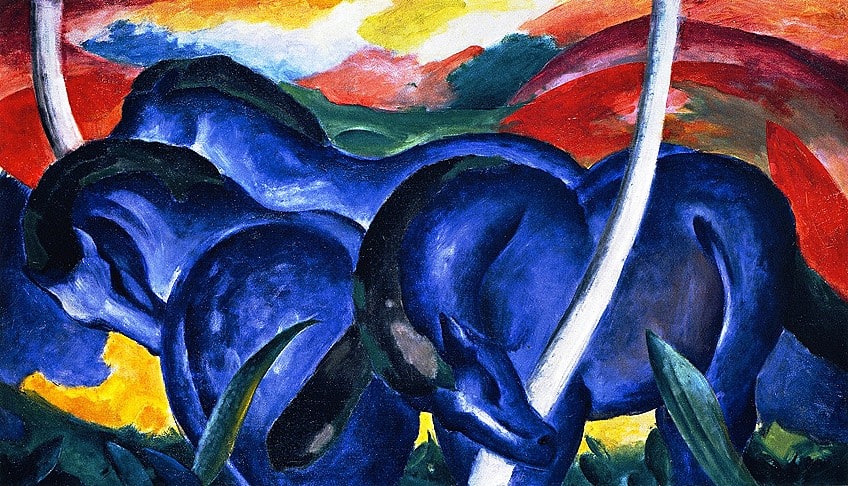
In painting such as Marc’s The Blue Horses , one identifies the color blue in the horses, which is a traditionally unrealistic portrayal of horses. Rather, the use of blue in this case holds a deeper spiritual meaning that also alludes to Marc’s notions on masculinity, given that the symbol of the horse has been emulated as a signifier of masculinity since the modern era. In contrast to the blue hues of The Blue Horses is Marc’s use of yellow as a symbol of femininity in The Yellow Cow , which is an example of how color has been attributed to themes and concepts that have no set physicality, yet with color, can adopt new meanings.
Color Science and the Color Wheel
So, what is color? The science of color involves the process of how “visible light” is formed. To understand the importance of color, one also needs to understand the makeup of color and how we perceive it. The human eye perceives light as specifics colors, depending on its wavelength and the reception of light from cells in our eyes. This brings us to the debate around whether color is real since it is something that is perceived in the presence of light.
Of important note is also the understanding that light is only a small portion of the entire electromagnetic spectrum, and is the only form from the spectrum that the human eye can perceive.

It is important to note that there are other forms of light like ultraviolet or infrared light that we cannot see and make up part of the electromagnetic spectrum.
In total, there are seven colors visible to the human eye. These include violet, indigo, blue, green, yellow, orange, and red.
These colors are in the order of their wavelength size, which ranges from the lowest to the highest. We can better understand these colors from their various divisions, which is best summarized in the color wheel . The color wheel was invented by Sir Isaac Newton in 1666 and has since been a useful tool that organizes the different colors into three groups, namely; primary, secondary, and tertiary colors . Blue, red, and yellow are the primary colors; orange, green, and purple are secondary colors , and red-orange, red-purple, blue-purple, blue-green, yellow-green, and yellow-orange are the tertiary colors.
It is important to note that secondary colors emerge from a combination of primary colors and tertiary colors come from a combination of primary and secondary colors.
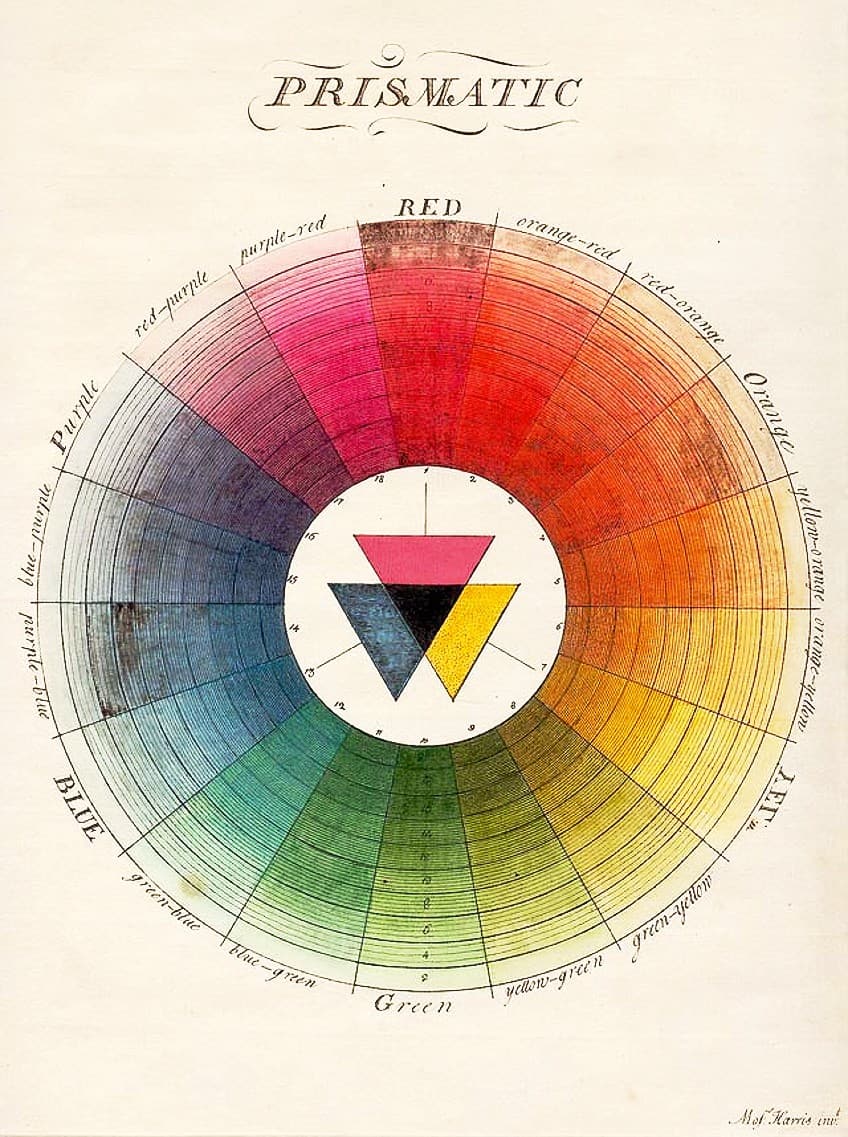
The primary colors, as noted above, produce various additional colors when combined. There are also complementary colors , which refer to the colors opposite one another on the color wheel. For example, blue is opposite orange, red is opposite green, and yellow is opposite purple. Each of these opposites are known as complementary colors.
Temperature in Color
Temperature in color refers to cool or warm colors , however, some sources suggest that this is also related to psychology and what we associate colors with. According to color science, color temperature is a measurement or scale that relates the colors of light radiated by objects to a temperature. The effect? As the temperature increases in color, so too does the emitted light, which changes toward hues that are bluer. Depending on the intensities and combinations of color, it has been suggested that some cool colors could appear warmer than others and vice versa.
If we look at colors like red or yellow, it gives us a sense of warmth and is associated with the sun or fire. Conversely, if we look at blue or green, it might give us a feeling of being cold and we could associate it with water or foliage.
Color Intensity and Saturation
Color saturation, otherwise understood as intensity, is often described as the brightness or brilliance of a hue and its level of intensity. The word “pure” is also used to describe when color is at its highest intensity because then, it is at its purest form and highly saturated.
How would you describe the opposite of a saturated color? Colors that appear dull or muted are understood as colors with low intensities.

Colors with less saturation will appear weaker or paler because of other colors like gray , white, or black added to it. Other colors can also be combined to adjust the saturation level. We will see an example of high saturation in the post-Impressionist painting titled A Meadow in the Mountains (1889) by Vincent van Gogh.
Another classic example can be seen in the work of the French Impressionist Claude Monet and his painting “Impression, Sunrise” (1872), which showcases a combination of colors with high and low saturation.
Value
Value is another important art element that can greatly impact how color is perceived. Value refers to the light or dark quality of color. Value is established when white or black is added to a color such that when white is added, it is referred to as a “tint” and black is added, it is referred to as a “shade”.
The color value can often be detected if an image is viewed in black and white to expose its grayscale values.
Furthermore, value can also create different meanings or emotional effects in an artwork by adding emphasis. Colors that are represented as darker or lighter can create various “moods” or suggest the time of day. It can also highlight part of the subject or create a focal point in the composition.
Texture is broadly defined as the surface quality of an artwork. There are two ways texture can be utilized, namely implied or real. The implied texture will give the illusion of surface quality and can range from textures that are rough, smooth, hard, or soft. Texture can also be perceived through gestural marks and two-dimensional markings. For example, photographs can have a “grainy” texture and two-dimensional drawings in graphite can emphasize different textures of objects.
Examples of texture in art was best captured by artists of the Northern Renaissance like Albrecht Dürer, who skillfully rendered his subjects with meticulous detail. This can be seen in works like “ Young Hare” (1502), where one can spot the immaculate detailing on the hare’s fine hair.
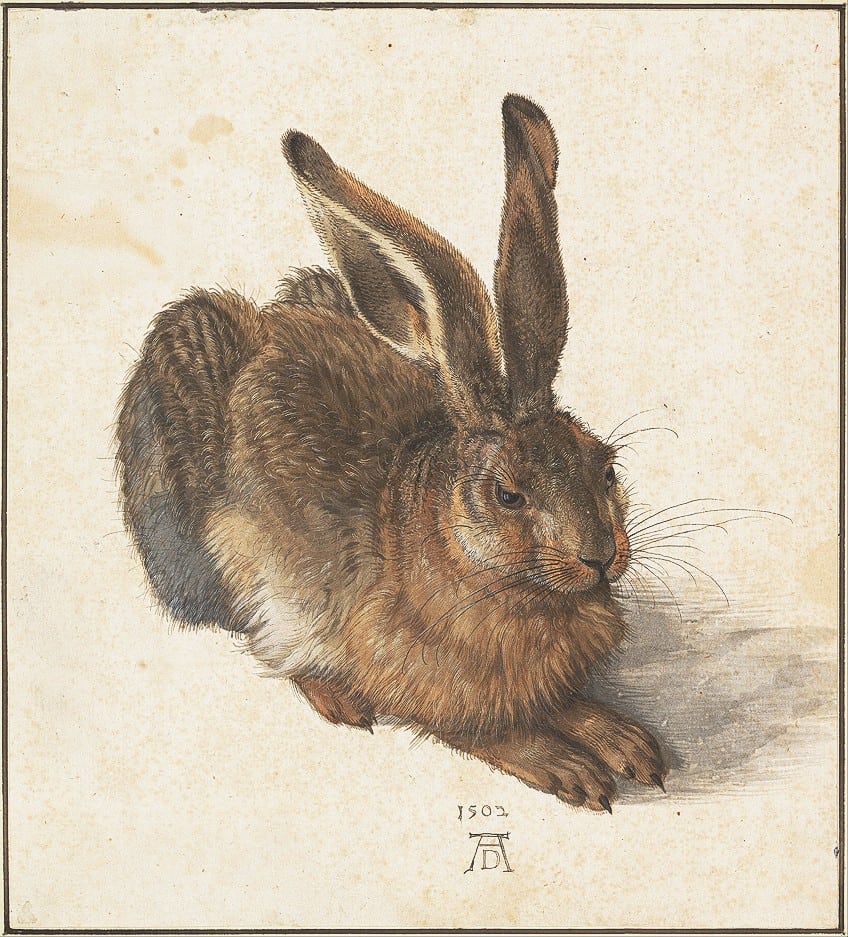
In the Dutch Golden Age, objects in still life paintings appeared almost real, which is usually described as “Realism” or “Naturalism”. An example of this style is found in Banquet Piece with Mince Pie (1635) by Willem Claesz Heda, whose application of texture is seen in the smooth and shiny surfaces of the metal objects, as well as the crumpled fabric of the tablecloth.
Real texture refers to a tactile surface, which can be either the paint on a canvas, the material of a sculpture, or an architectural structure. The Abstract Expressionist Jackson Pollock , who would physically drip or pour paint onto his canvases, is a good example of this.
In Pollock’s Autumn Rhythm (Number 30) (1950), which was created with enamel paint, we can see the tactile texture of the paint, which establishes rhythmic patterns all over the composition and is also one of the art principles we mentioned earlier.
Sculptures also provide tactile textures ranging from marble, stone, wood, plastic, or any other medium. We see this in marble sculptures like Pietà (1498 – 1499) by Michelangelo, which also implies texture as seen in Mary’s robes, which adds emphasis to the figure.
Other examples of texture in sculpture include the giant stainless steel animal sculptures created by Jeff Koons.
His famous balloon animals are larger than life and give the impression of a balloon that one would find at a birthday party. Although these sculptures have hard surfaces, they give the illusion of being as soft and fragile as an inflated balloon. An example includes Balloon Dog (Magenta) (1994 – 2000).
There are two primary types of shapes characterized by geometric and organic shapes, the latter of which is also referred to as a free form shape. Geometric shapes refer to objects like circles, squares, rectangles, or triangles and are described as two-dimensional and created by lines.
Other art elements like space and color can also contribute to creating a shape by emphasizing the negative and positive elements in the work or contributing to the color saturation and value of the subject.

Some of the best examples of geometric shapes in art are from the famous Abstract artist Piet Mondrian and the Polish-Russian painter Kazimir Malevich. Mondrian’s Composition with Yellow, Blue, and Red (1937 – 1942) depicts various squares and rectangles created by the placement of thick black lines across the canvas.
Another famous example of shape in painting can be spotted in the “Black Square” (1915) painting by Malevich, which popularized the significance of simple geometric shapes in Abstract art.
Form is another art element that relates to three dimensional structures. There are different types of forms that can range from spherical, cubic, pyramidal, conical, cylindrical, and many other types. In art, form can also be described as geometric or organic.
Form refers to the artwork’s entire framework or “body”, whether it describes the form of the subject or the physical form of a sculpture.
An example of form in art can be seen in the stainless steel Cloud Gate (2006) sculpture by Anish Kapoor in Chicago. The famous sculpture relies on an organic form, which resembles the shape of a bean shape.
The application of almost all other art elements like color, line, texture, and space can inform the outcome of the artwork’s form.
For example, with additional shading, a geometric circular shape can appear three-dimensional, thus turning into a spherical form. Techniques such as shading can also highlight an organic form. Similarly, outlines or contour lines can provide more definition to the subject.
Line is an important art element that is found in almost all types of artworks and provides the fundamental structure for the subject. Lines can vary in shape and length, from short, long, vertical, horizontal, and diagonal lines to curved, straight, thin, and thick lines.
There are numerous ways to leverage lines in a way that helps you to create different effects in an artwork.
As we mentioned earlier, art principles are tools that organize art elements. Principles like movement, rhythm, perspective, pattern, or emphasis determine how lines are utilized. If lines are applied in repeated patterns, they can create a sense of movement and rhythm giving the artwork meaning and emphasis. A famous and often-used example comes from Roy Lichtenstein’s Pop art painting In the Car (1963). The use of horizontal lines in this composition adds emphasis and creates the idea of movement and speed.
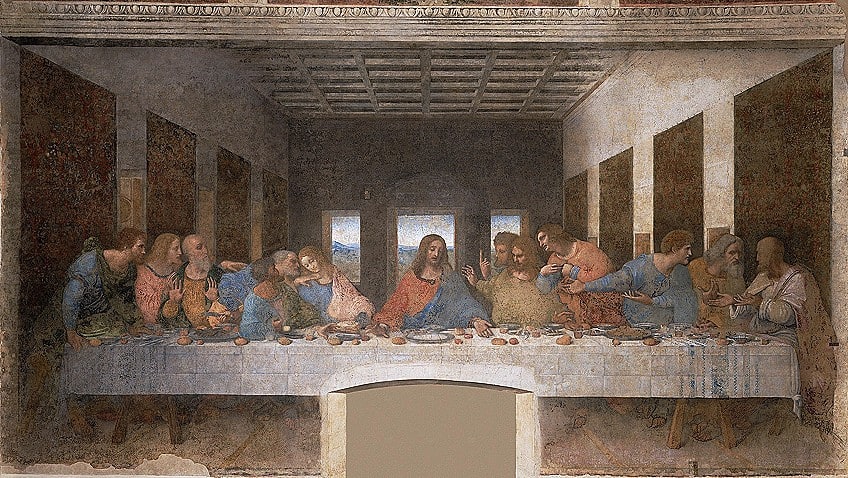
Lines can also draw attention to a focal point, for example, in Leonardo da Vinci’s The Last Supper (c. 1495 – 1498). Here, we see lines in the painted tapestries, along the left and right walls of the composition. The alignment of the tapestries creates a horizontal line that focuses our attention on the endpoint by the window in the background, which also highlights the central figure, Jesus Christ .
There are seemingly endless ways that lines can be utilized to create dramatic compositions. Whether it is through perspective methods or outlines, lines provide much room for experimentation.
Space is about the depth portrayed in a composition, which relates to its three-dimensionality. This typically refers to paintings or drawings, which depict the “illusion of space”. In sculptural or architectural art, space is defined as the area around the object, including the space occupied by the object, and whether it has openings or not.
There are also different types of space, namely positive and negative space; positive space refers to the object or subject and negative space is the space around it.
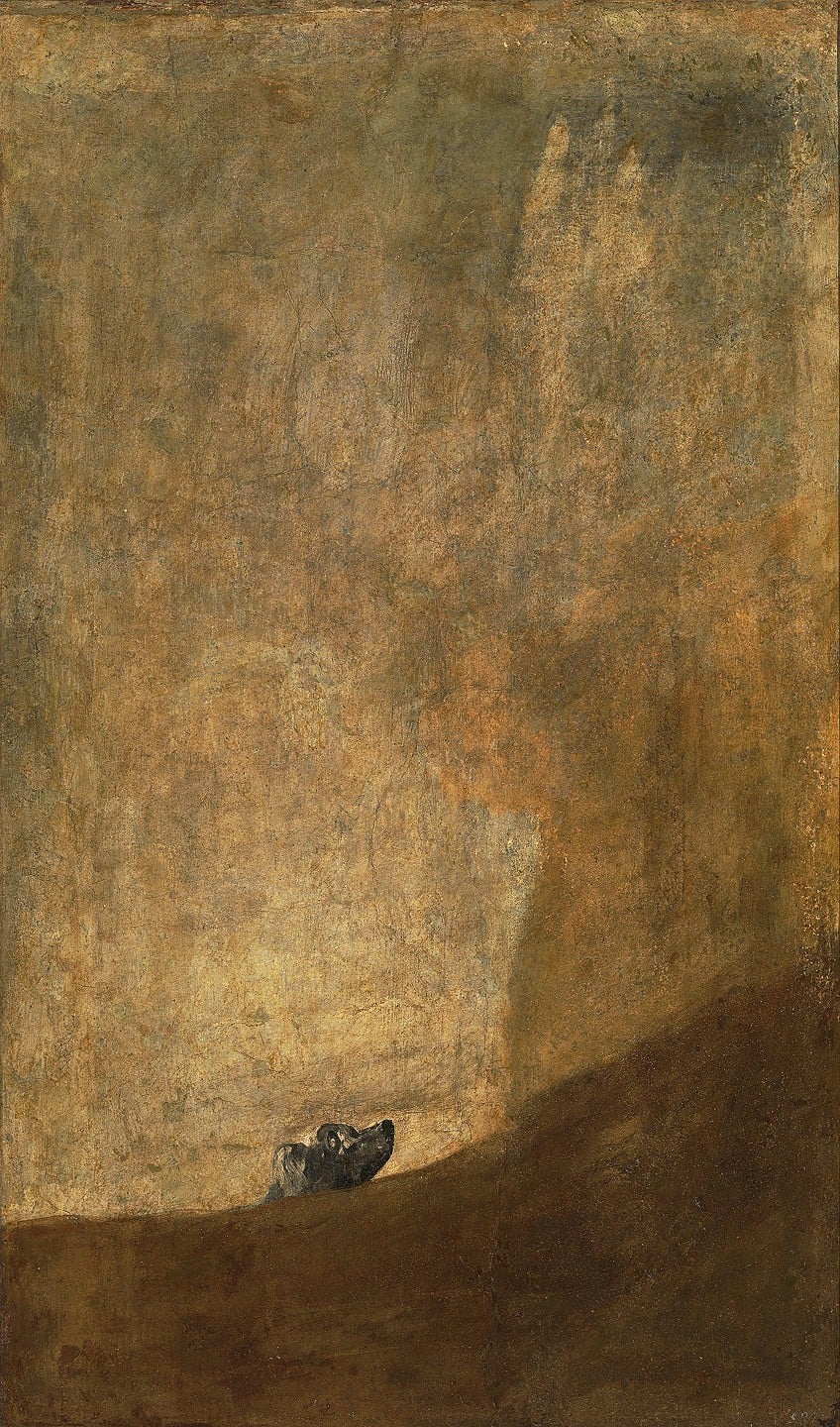
An example of this is in Francisco Goya’s Black Painting series and The Dog (c. 1819 – 1823), which features a large open space with a dog in the lower portion of the composition. This large area of space can also create emphasis and draw our attention to the dog below.
There are also techniques that assist in creating depth on a two-dimensional surface. These methods include linear and atmospheric perspectives, which employ other art elements like line, color, and value to enhance spatial effects.
In linear perspective, parallel lines that “recede” into the background to a single focal point create the illusion of space. This is what we see in Leonardo da Vinci’s The Last Supper (c. 1495 to 1498) mentioned above. Atmospheric perspective involves the use of color and value to create a hazy effect of the subject in the distance of a composition. By strategically applying space where necessary, you can be confident that your artwork will carry a great visual impact.
With these seven art elements in mind, your art practice is sure to improve. There is always more than meets the eye in any artwork and by understanding how art elements are utilized strategically, will also enhance your analytical capabilities.
Take a look at our art elements webstory here!
Frequently Asked Questions
What are the elements of art.
The elements of art include color, value, texture, line, shape, form, and space that can be used to create harmonious works of art. These art elements can also be used to analyze paintings, drawings, sculptures, graphic art, or any other type of art. Art elements are used to enhance an artwork, establish the subject, convey emotions, and guide the viewer’s eye to the main aspects of a composition.
How Many Art Elements Are There?
There are typically seven elements of art. These include value, color, space, texture, line, form, and shape, and are recognized as the most common art elements, among many sources and scholars. The seven elements of art are used in conjunction with the principles of art to create impactful works of art.
Why Are the Elements of Art Important?
The elements of art are incredibly important to enhance the impact of your artwork. Artists should learn more about the art elements and how to use them to not only create more visually impactful art but to critique it. Most importantly, one cannot create art without using even a few elements combined to depict, represent, and convey the message, image, or concept behind the artwork.

Alicia du Plessis is a multidisciplinary writer. She completed her Bachelor of Arts degree, majoring in Art History and Classical Civilization, as well as two Honors, namely, in Art History and Education and Development, at the University of KwaZulu-Natal, South Africa. For her main Honors project in Art History, she explored perceptions of the San Bushmen’s identity and the concept of the “Other”. She has also looked at the use of photography in art and how it has been used to portray people’s lives.
Alicia’s other areas of interest in Art History include the process of writing about Art History and how to analyze paintings. Some of her favorite art movements include Impressionism and German Expressionism. She is yet to complete her Masters in Art History (she would like to do this abroad in Europe) having given it some time to first develop more professional experience with the interest to one day lecture it too.
Alicia has been working for artincontext.com since 2021 as an author and art history expert. She has specialized in painting analysis and is covering most of our painting analysis.
Learn more about Alicia du Plessis and the Art in Context Team .
Cite this Article
Alicia, du Plessis, “Elements of Art – An Analysis of the Seven Art Elements.” Art in Context. July 1, 2022. URL: https://artincontext.org/elements-of-art/
du Plessis, A. (2022, 1 July). Elements of Art – An Analysis of the Seven Art Elements. Art in Context. https://artincontext.org/elements-of-art/
du Plessis, Alicia. “Elements of Art – An Analysis of the Seven Art Elements.” Art in Context , July 1, 2022. https://artincontext.org/elements-of-art/ .
Similar Posts
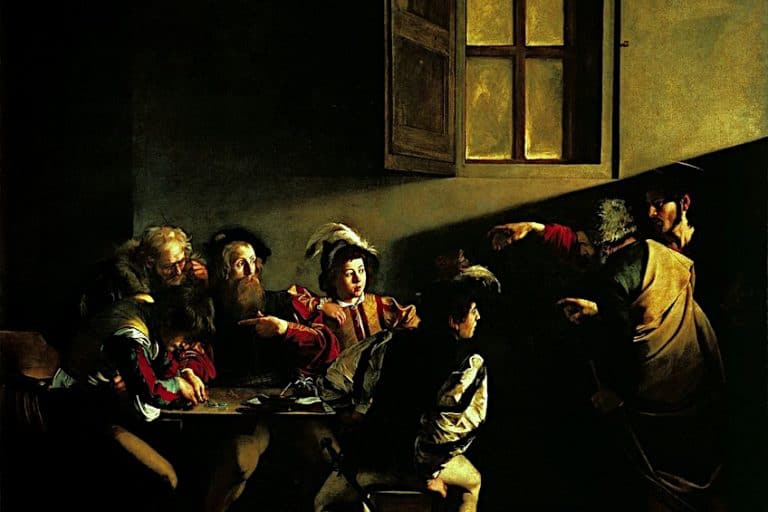

What Is Tone in Art? – Light and Dark Color Values
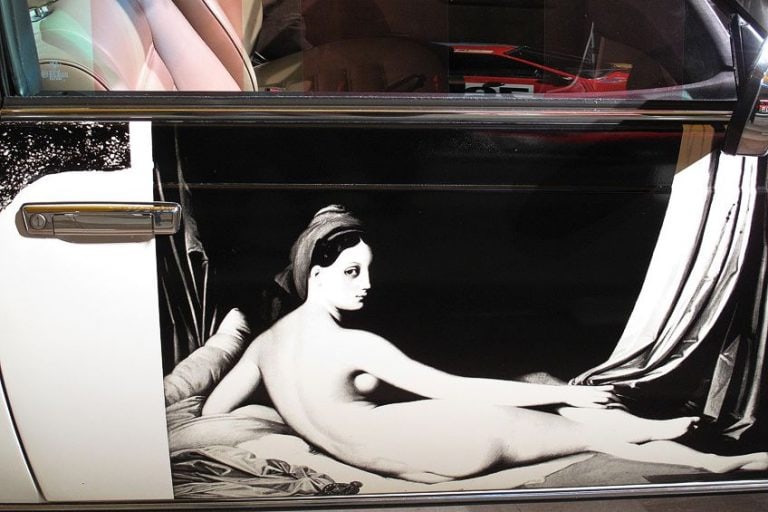
Postmodern Art – An In-Depth Exploration of the Postmodernism Period
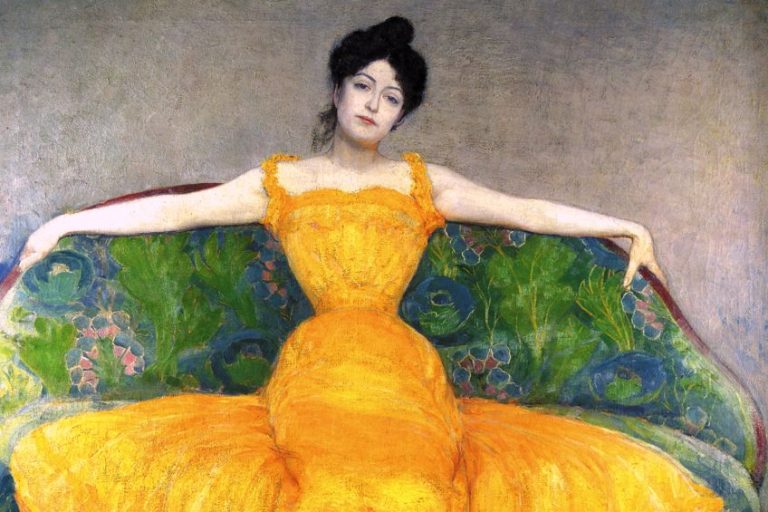
Vienna Secession – Breaking from Traditional Art Establishments

Botanical Illustration Art – Accurate Visual Depictions of Plants
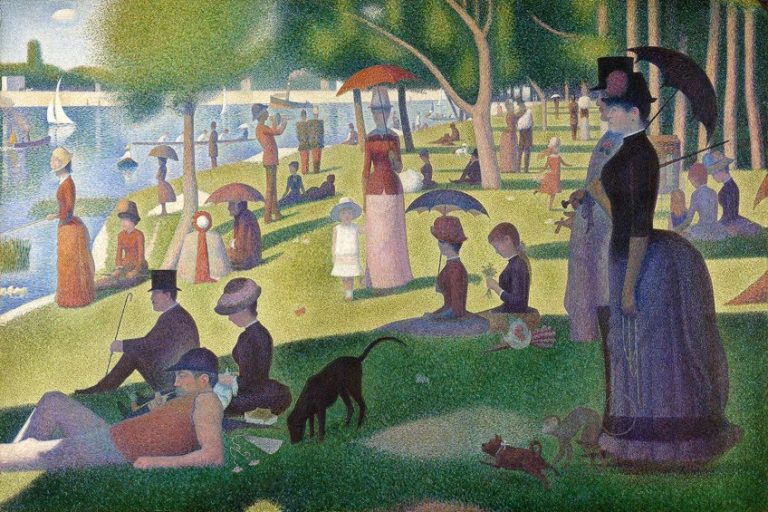
Neo-Impressionism – An Exploration of Neo-Impressionism Art
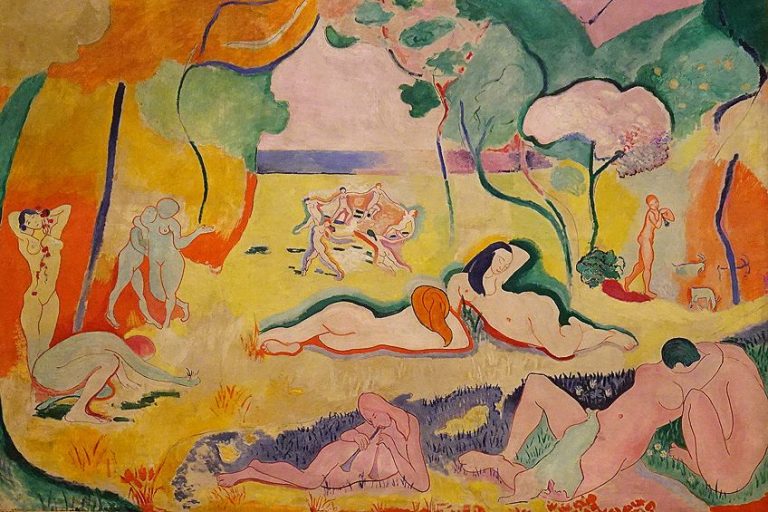
Fauvism – The Origins, Artworks, and Artists of the Fauve Movement
Thank you for this informative post. I thought of my dear art teacher Mrs. Evelyn Frankel; the very best teacher.
Thank you for your kind feedback, Louis.
Leave a Reply Cancel reply
Your email address will not be published. Required fields are marked *
Save my name, email, and website in this browser for the next time I comment.
The Most Famous Artists and Artworks
Discover the most famous artists, paintings, sculptors…in all of history!

MOST FAMOUS ARTISTS AND ARTWORKS
Discover the most famous artists, paintings, sculptors!

ELEMENTS OF ART – OUR NEW EBOOK !

In-depth knowledge of the elements of art in 8 chapters and 125 pages, for enthusiasts, practicing artists, and students.
Now with Discount!
Purdue Online Writing Lab Purdue OWL® College of Liberal Arts
Writing Essays in Art History

Welcome to the Purdue OWL
This page is brought to you by the OWL at Purdue University. When printing this page, you must include the entire legal notice.
Copyright ©1995-2018 by The Writing Lab & The OWL at Purdue and Purdue University. All rights reserved. This material may not be published, reproduced, broadcast, rewritten, or redistributed without permission. Use of this site constitutes acceptance of our terms and conditions of fair use.
Art History Analysis – Formal Analysis and Stylistic Analysis
Typically in an art history class the main essay students will need to write for a final paper or for an exam is a formal or stylistic analysis.
A formal analysis is just what it sounds like – you need to analyze the form of the artwork. This includes the individual design elements – composition, color, line, texture, scale, contrast, etc. Questions to consider in a formal analysis is how do all these elements come together to create this work of art? Think of formal analysis in relation to literature – authors give descriptions of characters or places through the written word. How does an artist convey this same information?
Organize your information and focus on each feature before moving onto the text – it is not ideal to discuss color and jump from line to then in the conclusion discuss color again. First summarize the overall appearance of the work of art – is this a painting? Does the artist use only dark colors? Why heavy brushstrokes? etc and then discuss details of the object – this specific animal is gray, the sky is missing a moon, etc. Again, it is best to be organized and focused in your writing – if you discuss the animals and then the individuals and go back to the animals you run the risk of making your writing unorganized and hard to read. It is also ideal to discuss the focal of the piece – what is in the center? What stands out the most in the piece or takes up most of the composition?
A stylistic approach can be described as an indicator of unique characteristics that analyzes and uses the formal elements (2-D: Line, color, value, shape and 3-D all of those and mass).The point of style is to see all the commonalities in a person’s works, such as the use of paint and brush strokes in Van Gogh’s work. Style can distinguish an artist’s work from others and within their own timeline, geographical regions, etc.
Methods & Theories To Consider:
Expressionism
Instructuralism
Postmodernism
Social Art History
Biographical Approach
Poststructuralism
Museum Studies
Visual Cultural Studies
Stylistic Analysis Example:
The following is a brief stylistic analysis of two Greek statues, an example of how style has changed because of the “essence of the age.” Over the years, sculptures of women started off as being plain and fully clothed with no distinct features, to the beautiful Venus/Aphrodite figures most people recognize today. In the mid-seventh century to the early fifth, life-sized standing marble statues of young women, often elaborately dress in gaily painted garments were created known as korai. The earliest korai is a Naxian women to Artemis. The statue wears a tight-fitted, belted peplos, giving the body a very plain look. The earliest korai wore the simpler Dorian peplos, which was a heavy woolen garment. From about 530, most wear a thinner, more elaborate, and brightly painted Ionic linen and himation. A largely contrasting Greek statue to the korai is the Venus de Milo. The Venus from head to toe is six feet seven inches tall. Her hips suggest that she has had several children. Though her body shows to be heavy, she still seems to almost be weightless. Viewing the Venus de Milo, she changes from side to side. From her right side she seems almost like a pillar and her leg bears most of the weight. She seems be firmly planted into the earth, and since she is looking at the left, her big features such as her waist define her. The Venus de Milo had a band around her right bicep. She had earrings that were brutally stolen, ripping her ears away. Venus was noted for loving necklaces, so it is very possibly she would have had one. It is also possible she had a tiara and bracelets. Venus was normally defined as “golden,” so her hair would have been painted. Two statues in the same region, have throughout history, changed in their style.
Compare and Contrast Essay
Most introductory art history classes will ask students to write a compare and contrast essay about two pieces – examples include comparing and contrasting a medieval to a renaissance painting. It is always best to start with smaller comparisons between the two works of art such as the medium of the piece. Then the comparison can include attention to detail so use of color, subject matter, or iconography. Do the same for contrasting the two pieces – start small. After the foundation is set move on to the analysis and what these comparisons or contrasting material mean – ‘what is the bigger picture here?’ Consider why one artist would wish to show the same subject matter in a different way, how, when, etc are all questions to ask in the compare and contrast essay. If during an exam it would be best to quickly outline the points to make before tackling writing the essay.
Compare and Contrast Example:
Stele of Hammurabi from Susa (modern Shush, Iran), ca. 1792 – 1750 BCE, Basalt, height of stele approx. 7’ height of relief 28’
Stele, relief sculpture, Art as propaganda – Hammurabi shows that his law code is approved by the gods, depiction of land in background, Hammurabi on the same place of importance as the god, etc.
Top of this stele shows the relief image of Hammurabi receiving the law code from Shamash, god of justice, Code of Babylonian social law, only two figures shown, different area and time period, etc.
Stele of Naram-sin , Sippar Found at Susa c. 2220 - 2184 bce. Limestone, height 6'6"
Stele, relief sculpture, Example of propaganda because the ruler (like the Stele of Hammurabi) shows his power through divine authority, Naramsin is the main character due to his large size, depiction of land in background, etc.
Akkadian art, made of limestone, the stele commemorates a victory of Naramsin, multiple figures are shown specifically soldiers, different area and time period, etc.
Iconography
Regardless of what essay approach you take in class it is absolutely necessary to understand how to analyze the iconography of a work of art and to incorporate into your paper. Iconography is defined as subject matter, what the image means. For example, why do things such as a small dog in a painting in early Northern Renaissance paintings represent sexuality? Additionally, how can an individual perhaps identify these motifs that keep coming up?
The following is a list of symbols and their meaning in Marriage a la Mode by William Hogarth (1743) that is a series of six paintings that show the story of marriage in Hogarth’s eyes.
- Man has pockets turned out symbolizing he has lost money and was recently in a fight by the state of his clothes.
- Lap dog shows loyalty but sniffs at woman’s hat in the husband’s pocket showing sexual exploits.
- Black dot on husband’s neck believed to be symbol of syphilis.
- Mantel full of ugly Chinese porcelain statues symbolizing that the couple has no class.
- Butler had to go pay bills, you can tell this by the distasteful look on his face and that his pockets are stuffed with bills and papers.
- Card game just finished up, women has directions to game under foot, shows her easily cheating nature.
- Paintings of saints line a wall of the background room, isolated from the living, shows the couple’s complete disregard to faith and religion.
- The dangers of sexual excess are underscored in the Hograth by placing Cupid among ruins, foreshadowing the inevitable ruin of the marriage.
- Eventually the series (other five paintings) shows that the woman has an affair, the men duel and die, the woman hangs herself and the father takes her ring off her finger symbolizing the one thing he could salvage from the marriage.
Home — Essay Samples — Arts & Culture — Art History — Art Appreciation: Understanding the Importance of Art
Art Appreciation: Understanding The Importance of Art
- Categories: Art History Artwork
About this sample

Words: 747 |
Published: Jan 30, 2024
Words: 747 | Pages: 2 | 4 min read
Table of contents
Background information on art appreciation, understanding the elements of art, analyzing artwork, historical and cultural context, emotional and intellectual response, contemporary art appreciation.
- Burton, J. (2019). Art Appreciation and the Perception of Risk. Risk Analysis, 39(10), 2145–2153. https://doi-org.libproxy.smu.edu.sg/10.1111/risa.13353
- Kim, S., & Kim, J. (2019). Aesthetic experiences and art-related emotions in art museum visitation. International Journal of Culture and Mental Health, 12(2), 165-176. doi: 10.1080/17542863.2017.1415361
- Taylor, J. (2018). Understanding the Art Museum Experience: An Analysis of Museum Visitor Experience Evaluation Forms. Visitor Studies, 21(2), 153–169. https://doi-org.libproxy.smu.edu.sg/10.1080/10645578.2018.1474847

Cite this Essay
To export a reference to this article please select a referencing style below:
Let us write you an essay from scratch
- 450+ experts on 30 subjects ready to help
- Custom essay delivered in as few as 3 hours
Get high-quality help

Dr Jacklynne
Verified writer
- Expert in: Arts & Culture

+ 120 experts online
By clicking “Check Writers’ Offers”, you agree to our terms of service and privacy policy . We’ll occasionally send you promo and account related email
No need to pay just yet!
Related Essays
1 pages / 479 words
2 pages / 924 words
1 pages / 625 words
8 pages / 3639 words
Remember! This is just a sample.
You can get your custom paper by one of our expert writers.
121 writers online
Still can’t find what you need?
Browse our vast selection of original essay samples, each expertly formatted and styled
Related Essays on Art History
One of the most iconic pieces of art in history is the sculpture of David. Two of the most famous renditions of this subject were created by the renowned artists Michelangelo and Donatello. While both sculptures depict the [...]
In John Steinbeck's novel Of Mice and Men, foreshadowing plays a significant role in building the tension and creating a tragic conclusion. From the very beginning, Steinbeck employs this literary device to forecast the future [...]
The Old English epic poem Beowulf has long fascinated scholars and readers alike with its vivid portrayal of heroic feats, epic battles, and complex themes. Among the many striking features of this medieval masterpiece is the [...]
In the world of school and university, final exams are a big deal. They wrap up what students have learned and give teachers a way to see how well students understand stuff. This essay's gonna take a close look at final exams, [...]
Christian art consists of all visual artworks produced in an attempt to illustrate and portray in tangible form the teachings of Christianity. This includes sculpture, painting, mosaics, metalwork, embroidery, and architecture. [...]
During the Roman Empire, mosaics were built in large rooms to make those rooms look more admirable and exciting. There was an architect that wrote a book about mosaics and how they were designed but this book did not include how [...]
Related Topics
By clicking “Send”, you agree to our Terms of service and Privacy statement . We will occasionally send you account related emails.
Where do you want us to send this sample?
By clicking “Continue”, you agree to our terms of service and privacy policy.
Be careful. This essay is not unique
This essay was donated by a student and is likely to have been used and submitted before
Download this Sample
Free samples may contain mistakes and not unique parts
Sorry, we could not paraphrase this essay. Our professional writers can rewrite it and get you a unique paper.
Please check your inbox.
We can write you a custom essay that will follow your exact instructions and meet the deadlines. Let's fix your grades together!
Get Your Personalized Essay in 3 Hours or Less!
We use cookies to personalyze your web-site experience. By continuing we’ll assume you board with our cookie policy .
- Instructions Followed To The Letter
- Deadlines Met At Every Stage
- Unique And Plagiarism Free
- Humanities ›
- Visual Arts ›
- Art & Artists ›
- Art History ›
The 7 Elements of Art and Why You Should Know Them
ThoughtCo / Marina Li
- Art History
- Architecture
The elements of art are like atoms in that both serve as building blocks for creating something. You know that atoms combine and form other things. Sometimes they'll casually make a simple molecule, as when hydrogen and oxygen form water (H 2 O). If hydrogen and oxygen take a more aggressive career path and bring carbon along as a co-worker, they might form something more complex, like a molecule of sucrose (C 12 H 22 O 11 ).
The 7 Elements of Art
A similar activity happens when the elements of art are combined. Instead of elements such as hydrogen , oxygen , and carbon , in art, you have these building blocks :
Artists manipulate the seven elements of art, mix them with design principles, and compose art. Not every work of art contains every one of these elements, but at least two are always present.
For example, a sculptor by default has to have both form and space in a sculpture , because these elements are three-dimensional . They can also appear in two-dimensional works through perspective and shading.
Art would be sunk without line, sometimes known as "a moving point." While line isn't found in nature, it is essential to depicting objects and symbols and defining shapes.
Texture is another element, like form or space, that can be real (run your fingers over an Oriental rug or hold an unglazed pot), created (think of van Gogh 's lumpy, impasto-ed canvases ), or implied (through clever use of shading ).
Color is often the whole point for those who are visual learners and thinkers.
Why Are the Elements of Art Important?
The elements of art are important for several reasons. First, and most importantly, a person can't create art without utilizing at least a few of them. No elements, no art—end of story. And we wouldn't even be talking about any of this, would we?
Secondly, knowing what the elements of art are enables us to:
- Describe what an artist has done
- Analyze what is going on in a particular piece
- Communicate our thoughts and findings using a common language
Musicians can talk about the key of "A," and they all know it means "a pitch relating to 440 oscillations per second of vibration." Mathematicians may use the basic word " algorithm " and feel confident that most people know they mean "a step-by-step procedure for carrying out computation ." Botanists worldwide will employ the name "rosa rugosa," rather than the much longer "that old-fashioned shrub rose - you know, the one that leaves hips in the fall - with the five-petaled flowers that can be yellow, white, red or pink." These are all specific examples of a common language coming in handy for intelligent (and shortened) discourse.
So it is with the elements of art. Once you know the elements, you can trot them out, time after time, and never put a wrong foot forward in the art world .
Does your instructor want you to write a few words and/or pages on a painting of your choice? Choose wisely, then wax euphoric on form , lines , and color .
Have you found an unidentified work in your great-aunt's attic/toolshed/outhouse? It is helpful when describing the piece to someone who may be able to give more information to throw in some of the piece's elements of art along with: "It's an etching. It's on paper ."
Stumped for conversation during an art gallery show? Try "The artist's use of ________ (insert element here) is interesting." This is a much safer course than attempting to psychoanalyze the artist (after all, you may be standing in a clump of people including his or her mother) or using words that leave you uncertain of exact meanings and/or pronunciations.
The elements of art are both fun and useful. Remember line, shape, form, space, texture , value, and color. Knowing these elements will allow you to analyze, appreciate, write, and chat about art, as well as be of help should you create art yourself.
- The Most Important Functions of Art
- 7 Major Painting Styles—From Realism to Abstract
- Is Mary Magdalene in Da Vinci's 'The Last Supper?'
- Surrealism, the Amazing Art of Dreams
- What Is Meant by "Emphasis" in Art?
- Why Should I Study Art History?
- What Is Texture in Art?
- How Are Patterns Used in Art?
- Understanding Proportion in Art
- How the Golden Ratio Relates to Art
- The Proto-Renaissance - Art History 101 Basics
- 10 Tips for Art History Students
- What Is Balance in Art and Why Does It Matter?
- The Different Periods of Ancient Greek Art
- The Element of Space in Artistic Media
- The Definition of Shape in Art

Elements of art
A brief introduction to the building blocks of art.
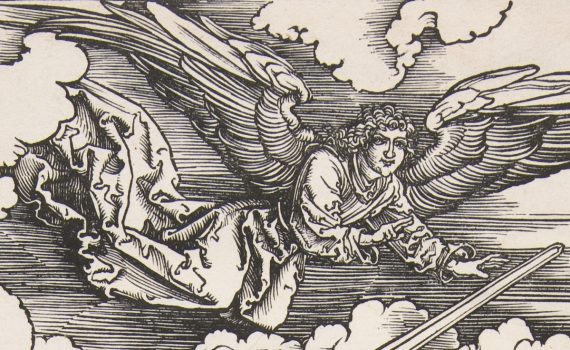
By Dr. Asa Simon Mittman
Line is the most basic visual element.
Shape and form

There are two main types of shapes—geometric and organic.

Artists can use colors for many reasons, including setting moods and highlighting importance.
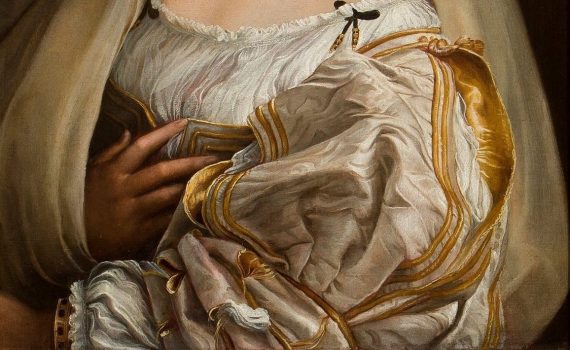
Space is used to refer to depth, real or represented.
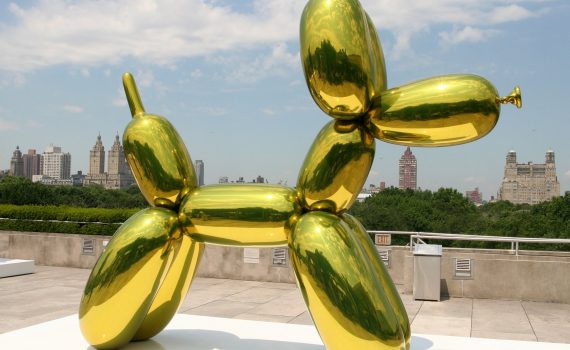
Texture is the feeling of a surface, real or represented.
Surface and depth
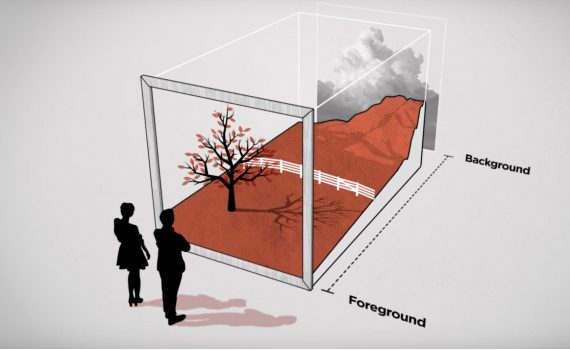
By Art Institute of Chicago
What makes paintings feel as deep as the view from a window or as flat as a wall?
Light and shadow
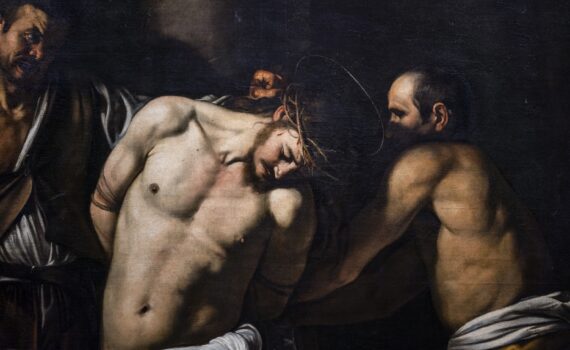
Whether setting the mood or celebrating the divine, artists play with light. Sometimes, they even sculpt with it.
Your donations help make art history free and accessible to everyone!
| ') } function showText1(){ document.write(r_text1[r]); } function showLink0(){ document.write(' ') } //--> |

| Established in 1996 | Tuesday, October 1, 2024 |
| --> --> |
| ') } function showText2i(){ document.write(r_text2i[r]); } function showLink2i(){ document.write(' ') } //--> |
| What is an Art Essay? Tips to Elevate Your Art Essay Writing | ||
| ') } function showText3i(){ document.write(r_text3i[r]); } function showLink3i(){ document.write(' ') } //--> |
| Today's News December 9, 2021 | |
|
COMMENTS
The visual art terms separate into the elements and principles of art. The elements of art are color, form, line, shape, space, and texture. The principles of art are scale, proportion, unity, variety, rhythm, mass, shape, space, balance, volume, perspective, and depth.
We all understand the vocabulary of art subconsciously, but recognizing how it’s applied enriches our experience of art and allows for nuanced discussion of artworks and appreciation of the artist's passion and skill. The vocabulary of art is made up of the Formal Elements of Design: line, shape, form, space, color, texture, motion, and time.
The seven elements of art are line, shape, form, space, value, color and texture. These elements are the essential components, or building blocks, of any artwork. Any good artwork should consist of these 7 ingredients. Element 1 - Line. Line is the most basic element of art.
There are typically seven primary elements of art namely; color, value, line, shape, form, texture, and space. We will discuss each of these in more detail below. Artists can apply the seven elements of art in numerous different ways to create artworks that are visually appealing and expressive.
These OWL resources provide guidance on typical genres with the art history discipline that may appear in professional settings or academic assignments, including museum catalog entries, museum title cards, art history analysis, notetaking, and art history exams.
This essay will contextualize the topic, provide background information on art appreciation, discuss the elements of art, analyze artwork, understand the historical and cultural context, explore the emotional and intellectual response, and appreciate contemporary art.
Knowing the 7 elements of art (line, shape, form, space, texture, value and color) allows you to analyze, appreciate, write about, and discuss art.
What can we notice at first glance about a work of art? Is it two-dimensional or three-dimensional? What is the medium? What kinds of actions were required in its production? How big is the work? What are the elements of design used within it? Starting with line: is it soft or hard, jagged or straight, expressive or mechanical?
We believe art has the power to transform lives and to build understanding across cultures. The brilliant histories of art belong to everyone, no matter their background. With 503 contributors from 201 colleges, universities, museums, and research centers, Smarthistory is the most-visited art history resource in the world.
• Do your research: Exhaustive research is a crucial ingredient in a well-written essay. You must refer to verified data sources to collect valuable information on your essay topic. As the author, you must analyze the question at hand and figure out how to justify your point of view.